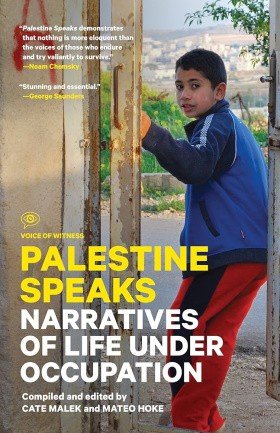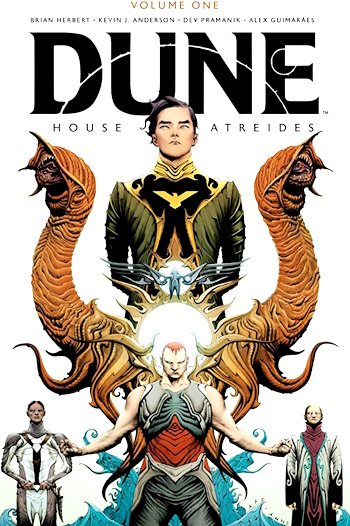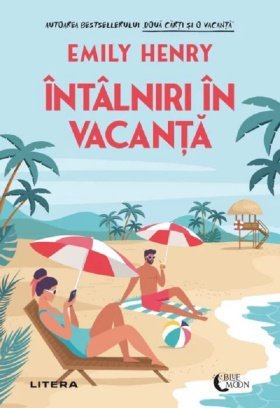NADER AL-MASRI, Semi-professional runner
APPENDICES
I. Timeline of Modern Palestine
II. Glossary
III. Palestine and International Law by Allegra Pacheco
IV. Gaza’s Tunnel-Based Economy by Nicolas Pelham
V. Palestinian Demographics
VI. In Waiting by Riyam Kafri Abu Laban
ACKNOWLEDGMENTS
ABOUT THE EDITORS
INTRODUCTION
BETWEEN US BREAD AND SALT
by Cate Malek and Mateo Hoke
Crossing into the West Bank requires passing through a series of barriers. For example, to get from Jerusalem into neighboring Bethlehem means navigating a twenty-six-foot concrete wall that spans the horizon. To pass through on foot, individuals must walk through a maze of security screenings known as “Checkpoint 300,” one of numerous heavily guarded crossing points set up along the 440-mile-long, partially constructed barrier snaking through the West Bank.
As one approaches Checkpoint 300 from Jerusalem, the landscape is green, almost idyllic, filled with olive trees, wild flowers, and the occasional grazing sheep. But closer to the wall, in a militarized no-man’s-land, trash and barbed wire litter the sides of the road. The checkpoint itself is marked by a squat concrete and metal structure. At the entrance to the checkpoint is a large red sign warning Israeli citizens that entering Area A—the small portion of territory within the West Bank controlled by Palestinians—is against Israeli law, and “dangerous to [their] lives.”
Beyond the Checkpoint 300 is a room, often filled to capacity, that feeds into pedestrian screening lines. Above these screening lines are metal walkways, and looking up, pedestrians sometimes find soldiers peering down at them, guns in hand, boots directly overhead. The first screening station is an ID check. Here, Palestinians must record their thumbprints electronically to prove they haven’t overstayed day-long work permits. International travelers need only show their passports. Pedestrians then go through a long passageway, a monitored turnstile, a large empty parking lot, one more ID check, another monitored turnstile, and another long passageway before finally spilling out near Bethlehem.
Compared to the eerie austerity of the checkpoint, Bethlehem is pulsing with life. Taxi drivers, dwarfed by the wall behind them, offer rides to the people coming through the crossing. Vendors call out the prices of fruit and sweets. People stop to greet friends or buy cups of coffee. On this side, the wall itself is coated in layers of colorful graffiti.
The contrast between the grim realities of the wall and the brisk liveliness outside of it was one of the things that first struck us about the West Bank. Cate moved to Bethlehem in 2009 to work for a non-profit tourism group that offered walking trips throughout the West Bank, as well as other regions in the Middle East. As part of her job, she traveled on foot through major cities and rural villages, meeting Palestinians from countless different backgrounds. Cate had previously worked with Mateo on an in-depth human rights story, and the two soon realized that Cate’s newfound connections in the West Bank could be the beginning of a powerful new reporting project.
Our aim from the start was to try and better understand the ways that life continues in the West Bank and Gaza despite a military occupation spanning generations.
Approaching Palestine as outsiders was a considerable challenge but also proved to be one of the strengths of the project. We sought out stories that might surprise us, so that we might also surprise our readers—no matter their backgrounds or knowledge of the region. Life in Palestine is astonishingly diverse, complex, and often contradictory. Hope flourishes right alongside stark cynicism and despair, and we found that many of the human rights abuses in Palestine take place in the mundane details of daily life. Simple things like traveling to work, sending children to school, or planning weddings can all be severely impacted by Israel’s ongoing occupation of the Palestinian territories. In Western media, West Bank home demolitions and missile strikes in Gaza make headlines, but rarely are they presented in the context of everyday Palestinian life.
Even during times of relative peace, Palestinian lives are complicated in countless ways. In addition to the checkpoints and barrier walls, a feeling of insecurity permeates nearly every facet of Palestinian society. It’s difficult for most Palestinians to find jobs, and of those that are available, most are low paying, menial, or dangerous. Palestinians face a continuous barrage of restrictions that include food, water, and electrical shortages; state repression of speech; detention and torture; forced evacuation; and the demolition of homes and family farms. Palestinian life is often one of forced indignity.
In the West Bank, Palestinians face a lack of mobility imposed by over five hundred checkpoints and roadblocks (like the 300 Checkpoint mentioned above) and a high unemployment rate. Thousands of men cross into Israel every day to find work. If these men cross legally with required permits, it means waking up at one a.m. in order to make it through crowded and demeaning checkpoints in time to start work at eight a.m. If they go illegally, they risk being arrested or shot as they walk long distances in order to cross the unsecured border areas between the West Bank and Israel. Since Palestine is not a state and residents don’t have citizenship, Palestinians can lose their residency rights and homes with little or no warning. Israeli soldiers come in the middle of the night to arrest family members, often without charges. School is often canceled due to strikes, protests, or clashes with soldiers. Palestinian governance is often corrupt, ineffective, and suspicious of signs of dissidence. Basic necessities such as water and electricity are in short supply. This is especially true in Gaza, but it’s also common to run out of water in the West Bank toward the end of the summer, which means many hot and sweaty weeks without the ability to shower, do laundry, or flush toilets.
In the Gaza Strip, life is dire. As we go to press, the Israeli military continues its latest ground invasion of Gaza as part of its ongoing conflict with Hamas and Gazan militias. More than 2,100 Palestinians have been killed and over 9,000 injured—the majority of them civilians (four Israeli civilians and sixty Israeli soldiers have also been killed). This latest clash follows two other military operations since Israeli forces first left the Gaza Strip in 2005. In 2008, Israel reacted to Gazan rocket fire into its territory by initiating twenty-two days of bombings. The UN estimates that 1,400 Palestinians were killed and 300,000 people lost their homes (three Israeli civilians and ten Israeli soldiers were also killed). Israel again bombed Gaza in 2012, once again citing rockets fired into Israel, as well as other attacks from Gaza.
But even in times of relative calm, Gazans face horrifying conditions. Due to an Israeli-built barrier wall, Gaza is essentially the world’s largest internment site. The wall ensures that Gaza’s residents cannot freely leave, and the blockade of goods means that critical supplies such as food, medicine, fuel, and construction material cannot enter. Eight out of ten Gazans are dependent on foreign aid to survive, and human and civil rights remain under constant attack, with both Israeli and Gazan government actions continuing to demoralize and economically suffocate the entirety of the Gaza Strip.
But these hardships are not the end of the story. Despite enormous deprivations, life goes on for Palestinians, much as it has for generations. Education is highly valued, and Palestine has the highest literacy rate in the Arab world at more than 95 percent. Religion is also important for many Palestinians. Weekends are often devoted to large family meals and weddings. There’s an easy intimacy among friends and strangers alike. And, as we quickly discovered, Palestinians pride themselves on their hospitality, welcoming guests extravagantly.
All the narrators in this book felt it was deeply important to tell their stories. An example is Muhanned Al-Azzah, one of the first people we interviewed. When we headed into the Al-Azzah refugee camp to meet Muhanned on a cold morning in January 2011, we knew little about him. We’d heard from our contacts in the city that he was an artist, that he had a history of political activism, and that he’d been arrested by the Israeli army. We also knew that the refugee camp where he lived was named for his grandparents, who had led their community in a flight to Bethlehem after their village was razed in 1948. But we didn’t know how much of his personal story he’d be willing to share with a pair of journalists from the United States.
We climbed an outdoor staircase, past socks and towels hung to dry on a railing, to the third floor of Muhanned’s house. Muhanned’s mother answered the door. She ushered us into the living room and cheerfully explained that Muhanned was still asleep. He came in a few minutes later, a man in his late twenties with a lean face and dark beard. He shuffled around the room in sweats, looking for his cigarettes. On his feet were fuzzy pink slippers, and strutting behind him was a Chihuahua—not exactly our preconceived notion of a political prisoner.
Muhanned took time warming up to us, speaking in short, vague answers to start. It went on like this for a while. Then, Muhanned’s mom brought in a tray of cookies and instant coffee with plenty of sugar and milk. The coffee was a welcome addition to our conversation. Not only did it keep us warm, it relaxed things. Our conversation started to flow more easily. Soon Muhanned was sharing stories with us of his childhood in a refugee camp, his harrowing arrest, and his time in prison.
Those cups of milky instant coffee were the first of hundreds of cups of coffee, glasses of lemonade, and plates of maklouba (a traditional chicken and rice dish) we would share with people over the course of putting this book together. There is a saying in Arabic, beynatna khubz wah milah, which means, “between us bread and salt.” It is a nod to the deep tradition of hospitality in this region, and means that once people share a meal together, they have a foundation for friendship.
One reason it was so important for our narrators to share their stories is that Palestinians have reached a particularly desperate time in their history. Most of the interviews for this book were conducted between 2011 and 2014. During this period, negotiations with Israel remained deadlocked, while the hopes of residents in the West Bank and Gaza continued to deteriorate. We completed our last round of substantive interviews in early summer 2014, weeks before the July 2014 Israeli invasion of Gaza. We continued to stay in contact with our narrators, and in some instances we have included postscripts describing the disastrous impact that the most recent bombing has had on their lives.
Though our narrators were all eager to share their stories, this book can be little more than a glimpse into Palestinian life and culture. In an area of land the size of Delaware, Palestinians speak numerous regional dialects. The landscape itself is extremely variable, moving from deserts, to green hill country, to the Mediterranean coast. To say that Palestinians are a diverse people would be a vast understatement. Over the course of this project, we spoke in depth with more than seventy individuals and conducted over one hundred interviews. From that pool of interviews, we chose sixteen stories that we believe offer a diverse, challenging look at the past and present of Palestinian life. We focused our attention on those living in occupied Palestine—here defined as Gaza and the West Bank (including East Jerusalem)—though in doing so we’ve left out important stories from Arab-Israeli citizens, Palestinian refugees living in other states, and the stories of many international aid workers who pass through Palestine each year.
Whether or not to include Israeli narrators was one of the most difficult decisions we made in compiling this book. We have not sought to provide equal representation of Israeli and Palestinian voices in this collection, because our concern here is the experience of growing up and making a life under military occupation. However, we ultimately chose to include two Israeli citizens living in the West Bank: Amiad Cohen and Tali Shapiro. We share their stories partly because Israeli citizens living in the West Bank make up a substantial portion—perhaps as much as 10 percent—of the total population of Palestine. And because many of our narrators often refer to settlers throughout this book, we felt it journalistically responsible to include Amiad’s narrative in order to offer our readers a look at life within a settlement, and to allow our readers to hear the opinions one settler has about living in the West Bank. We include Tali, a pro-Palestinian activist from Israel, in order to complicate our readers’ thinking of how the occupation affects life in the West Bank. Still, our narrators only represent themselves, and our two Israeli citizens are not meant to stand in for the lives, attitudes, or opinions of other Israelis.
And of course, the story of Palestine is much more complicated than the story of Israelis and Palestinians. The relationship between Israel of Palestine is often oversimplified, treated as a bitter family feud that will end only when the two sides stop hating each other. But there are many more players helping to preserve the status quo. Since the early 1980s, Israel has received billions a year in military aid from the U.S. From 2009 through 2018, the U.S. is scheduled to send $3 billion a year for Israeli defense. With this book our hope is that the narratives within provide readers with a more nuanced and humanized understanding of life on the ground in Palestine, as well as inspiration to take a more active interest in peace—and the role of foreign influence—in the region.
Palestine is often portrayed as a dark place—violent and unstable, too complicated for anyone but an expert in political science to understand. To many it is the global poster child of intractable conflict, a symbol of hopelessness. We came to Palestine not knowing what we’d find. But over bread and salt, coffee and tea, we found ourselves drawn into the stories we heard. Stories that were important for our narrators to share, and that we’re honored to share with our readers. These narratives show that while there is darkness in the occupied territories, there is also a tremendous amount of light in the lives of the people living there. We hope this book serves to reflect some of that light back out into the world and offers our readers a new understanding of life under occupation.
Cate Malek and Mateo Hoke
July 2014
EXECUTIVE EDITOR’S NOTE
The narratives in this book are the result of extensive oral history interviews with more than seventy men and women from across the West Bank, the Gaza Strip, and East Jerusalem, conducted over the course of nearly four years. These recorded interviews—over 250 hours of audio—were conducted by Cate Malek and Mateo Hoke as well as a team of interviewers and translators, and then transcribed by a small corps of dedicated volunteers. Managing editor Luke Gerwe and I helped the interview team shape and organize those raw transcripts into first-person narratives.
With every Voice of Witness narrative, we aim for a novelistic level of detail and a birth-to-now chronologized scope in order to portray narrators as individuals in all their complexity, rather than as case studies. With Palestine Speaks, we did not set out to create a comprehensive history of human rights in Palestine. Rather, our goal was to compile a collection of voices and experiences that would offer an accessible, thought-provoking, and ultimately humanizing and intimate window on what can often seem like an impenetrable topic.
The stories themselves remain faithful to the speakers’ words (we seek final narrator approval before publishing their narratives), and have been edited for clarity, coherence, and length. In a few cases, some names and details have been changed to protect the identities of our narrators and the identities of family and acquaintances. The narratives themselves have been carefully fact-checked, and are supported by various appendices and a glossary included in the back of the book that provide context and some explanation of the history of the region.

























